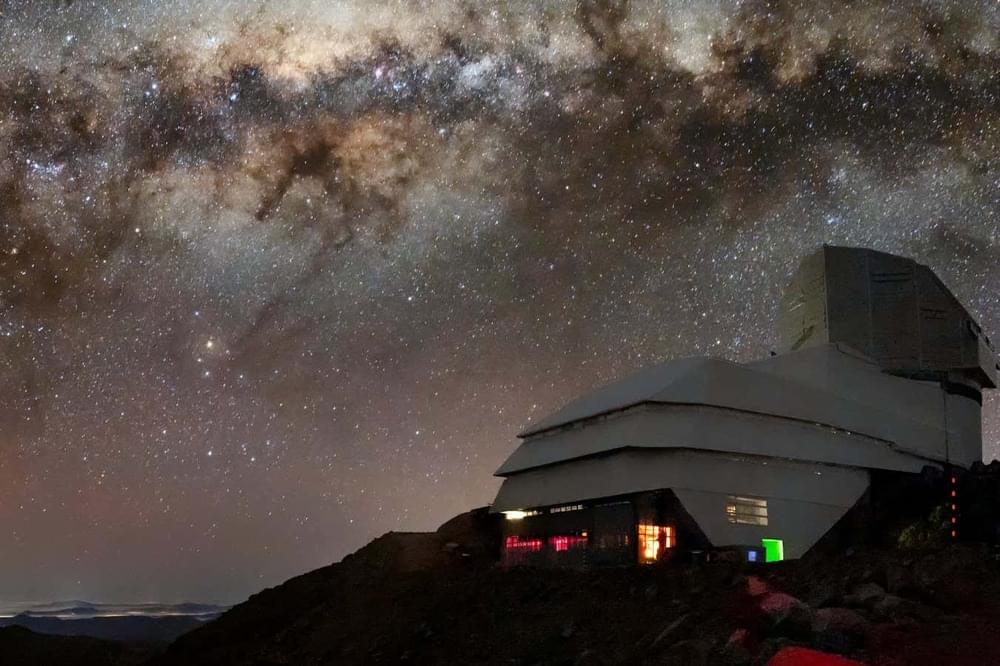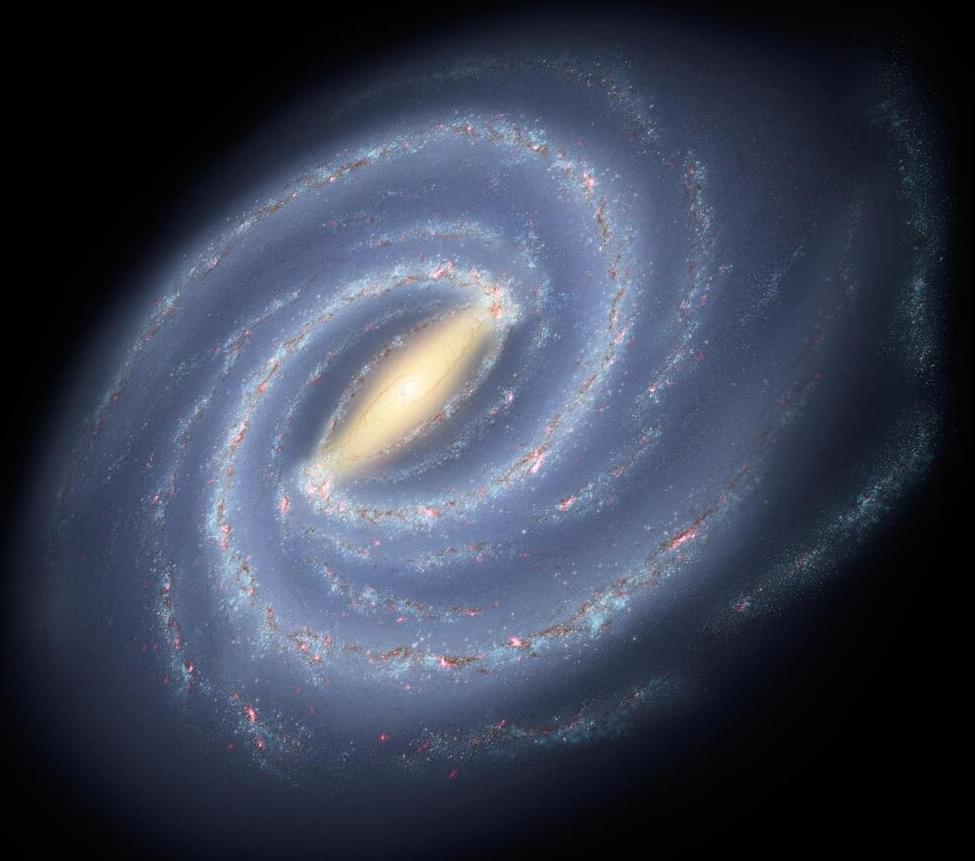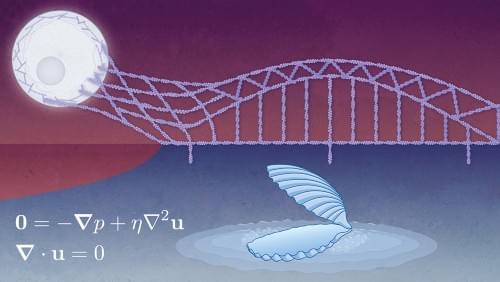Physicists have proposed that a mirror universe alongside our own might explain dark matter – and we might be able to see traces of its stars.


Physicists have proposed that a mirror universe alongside our own might explain dark matter – and we might be able to see traces of its stars.

Astrophysicists have discovered why spiral galaxies like the Milky Way are rare in the Supergalactic Plane, a dense region in our Local Universe. The research, led by Durham University and the University of Helsinki, used the SIBELIUS supercomputer simulation to show that galaxies in dense clusters on the Plane often merge, transforming spiral galaxies into elliptical ones. This finding, which aligns with telescope observations and supports the standard model of the Universe, helps explain a long-standing cosmic anomaly about galaxy distribution.
Astrophysicists say they have found an answer to why spiral galaxies like our own Milky Way are largely missing from a part of our Local Universe called the Supergalactic Plane.
The Supergalactic Plane is an enormous, flattened structure extending nearly a billion light years across in which our own Milky Way galaxy is embedded.
The world works at different levels — fundamental physics, physics, chemistry, biology, psychology, sociology — with each level having its own rules and regularities. Here’s the deep question: Ultimately, can what happens at a higher level be explained entirely in terms of what happens at a lower level? If the answer is ‘No’, if complete explanatory reduction fails, then what else could be going on?\
\
Free access to Closer to Truth’s library of 5,000 videos: http://bit.ly/376lkKN\
\
Watch more interviews on strong emergence: https://bit.ly/3vZsgq4\
\
George Francis Rayner Ellis is the Emeritus Distinguished Professor of Complex Systems in the Department of Mathematics and Applied Mathematics at the University of Cape Town in South Africa.\
\
Register for free at CTT.com for subscriber-only exclusives: http://bit.ly/2GXmFsP\
\
Closer to Truth presents the world’s greatest thinkers exploring humanity’s deepest questions. Discover fundamental issues of existence. Engage new and diverse ways of thinking. Appreciate intense debates. Share your own opinions. Seek your own answers.
Dr. Karl Friston, University College London, applies the free energy principle to set forth an account of life, or self-organization, in terms of active inference. August 19th, 2023.
Have you ever wondered what the universe looked like before the first stars were born? How did these stars form and how did they change the cosmos? These are some of the questions that the James Webb Space Telescope, or Webb for short, will try to answer. Webb is the most powerful and ambitious space telescope ever built, and it can observe the infrared light from the most distant and ancient objects in the universe, including the first stars. The first stars are extremely hard to find, because their light is very faint and redshifted by the expansion of the universe. But Webb has a huge mirror, a suite of advanced instruments, and a unique orbit that allows it to detect and study the first stars. By finding the first stars, Webb can learn a lot of information that can help us understand the early history and evolution of the universe, and test and refine the theoretical models and simulations of the first stars and their formation processes. Webb can also reveal new and unexpected phenomena and raise new questions about the first stars and their role in the universe. Webb is opening a new window to the cosmic dawn, where the first stars may shine. If you want to learn more about Webb and the first stars, check out this article1 from Universe Today. And don’t forget to like, share, and subscribe for more videos like this. Thanks for watching and see you next time. \
\
Chapters:\
00:00 Introduction\
01:09 Finding the first stars\
03:21 Technical challenges and scientific opportunities\
07:18 Challenges and limitations \
10:04 Outro\
10:31 Enjoy\
\
Best Telescopes for beginners:\
Celestron 70mm Travel Scope\
https://amzn.to/3jBi3yY\
\
Celestron 114LCM Computerized Newtonian Telescope\
https://amzn.to/3VzNUgU\
\
Celestron – StarSense Explorer LT 80AZ\
https://amzn.to/3jBRmds\
\
Visit our website for up-to-the-minute updates:\
www.nasaspacenews.com\
\
Follow us \
Facebook: / nasaspacenews \
Twitter: / spacenewsnasa \
\
Join this channel to get access to these perks:\
/ @nasaspacenewsagency \
\
#NSN #webb #firststars #cosmicdawn #astronomy #space #universe #infrared #telescope #nasa #esa #science #discovery #history #evolution #reionization #chemistry #physics #light #darkness #bigbang #galaxies #blackholes #supernovae #elements #life #youtube #video #education #entertainment #information #NASA #Astronomy
Quanta Magazine’s full list of the major computer science discoveries from 2023.
In 2023, artificial intelligence dominated popular culture — showing up in everything from internet memes to Senate hearings. Large language models such as those behind ChatGPT fueled a lot of this excitement, even as researchers still struggled to pry open the “black box” that describes their inner workings. Image generation systems also routinely impressed and unsettled us with their artistic abilities, yet these were explicitly founded on concepts borrowed from physics.
The year brought many other advances in computer science. Researchers made subtle but important progress on one of the oldest problems in the field, a question about the nature of hard problems referred to as “P versus NP.” In August, my colleague Ben Brubaker explored this seminal problem and the attempts of computational complexity theorists to answer the question: Why is it hard (in a precise, quantitative sense) to understand what makes hard problems hard? “It hasn’t been an easy journey — the path is littered with false turns and roadblocks, and it loops back on itself again and again,” Brubaker wrote. “Yet for meta-complexity researchers, that journey into an uncharted landscape is its own reward.”

Researchers at the University of Sussex have discovered the transformative potential of Martian nanomaterials, potentially opening the door to sustainable habitation on the red planet.
Using resources and techniques currently applied on the International Space Station and by NASA, Dr. Conor Boland, a Lecturer in Materials Physics at the University of Sussex, led a research group that investigated the potential of nanomaterials—incredibly tiny components thousands of times smaller than a human hair —for clean energy production and building materials on Mars.
Taking what was considered a waste product by NASA and applying only sustainable production methods, including water-based chemistry and low-energy processes, the researchers have successfully identified electrical properties within gypsum nanomaterials—opening the door to potential clean energy and sustainable technology production on Mars.

Dr Alberto Robledo is a senior research scientist at Instituto de Física, Universidad Nacional Autónoma de México (UNAM). Robledo earned his undergraduate degree from UNAM and his doctorate from University of St Andrews, UK. He has conducted extensive research in the fields of statistical physics and complex systems for over fifty years.

The robot is blind and cannot see its environment but can continue to balance and walk, even if an object is hurled at it.
UC researchers Ilija Radosavovic and Bike Zhang wondered if “reinforcement learning,” a concept made popular by large language models (LLMs) last year, could also teach the robot how to adapt to changing needs. To test their theory, the duo started with one of the most basic functions humans can perform — walking.
Transformer model for learning
The researchers started in the simulation world, running billions of scenarios in Isaac Gym, a high-performance GPU-based physics simulation environment. The algorithm in the simulator rewarded actions that mimicked human-like walking while punishing the ones that didn’t. Once the simulation perfected the task, it was transferred to a real-world humanoid bot that did not require further fine-tuning.
